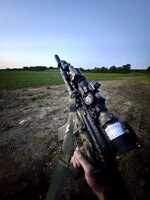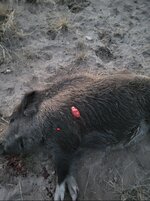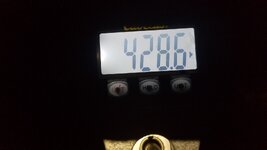DON'T HAVE TIME TO READ 176 PAGES? HERE'S THE CHEAT SHEET.
“Bullets matter more than headstamps.”
“Spent primers offer the supreme tutorial”.
I’ve read it here and elsewhere online. It got my attention. I started digging and asking questions and listened.
The 77gr TMK delivered by a .223 is where I ended up after many discussions and objective data regarding bullet performance and numerous pics of field results.
Now for the delivery system. Accurate. Repeatable. Reliable. Reasonable weight to afford steady shot placement and the ability to spot my own impacts yet packable. Tikka T3x, vertical grip, Sportsmatch rings, SWFA 6x MQ in mills. Replaced the trigger spring with a yo Dave, adjusted to my liking, then degreased everything and locked all of the screws down with loctite and got started.
The package checks all of the boxes. Plus, it’s FUN! Time at the range is spent learning to call wind, trigger control, spotting your own impacts and figuring out why a shot did or did not end up where you wanted it. No brake. No flinch. Inexpensive to shoot. The fun factor plus the ability to be able to afford to shoot a lot goes a long way to learning and understanding shooting, accuracy and precision.
With all of that said, I’ve decided to use 77 TMK out of a .223 from this delivery system for bear, deer and elk this season.
Opportunity presented itself a couple of days ago. I killed a mature, dry sow with the 77 TMK. Bullet performance exceeded all expectations! The terminal performance is on par with anything I’ve seen in a .284 or .30. Unreal performance. The bullet is a BEAST!
Practice will continue throughout the summer in preparation for the upcoming deer and elk seasons.
Based on my sample of one, the 77 TMK out of a .223 is truly a lethal combination well suited to a dedicated lower 48 big game rifle.
Would love to hear about others experiences with this bullet or similar bulletts!






